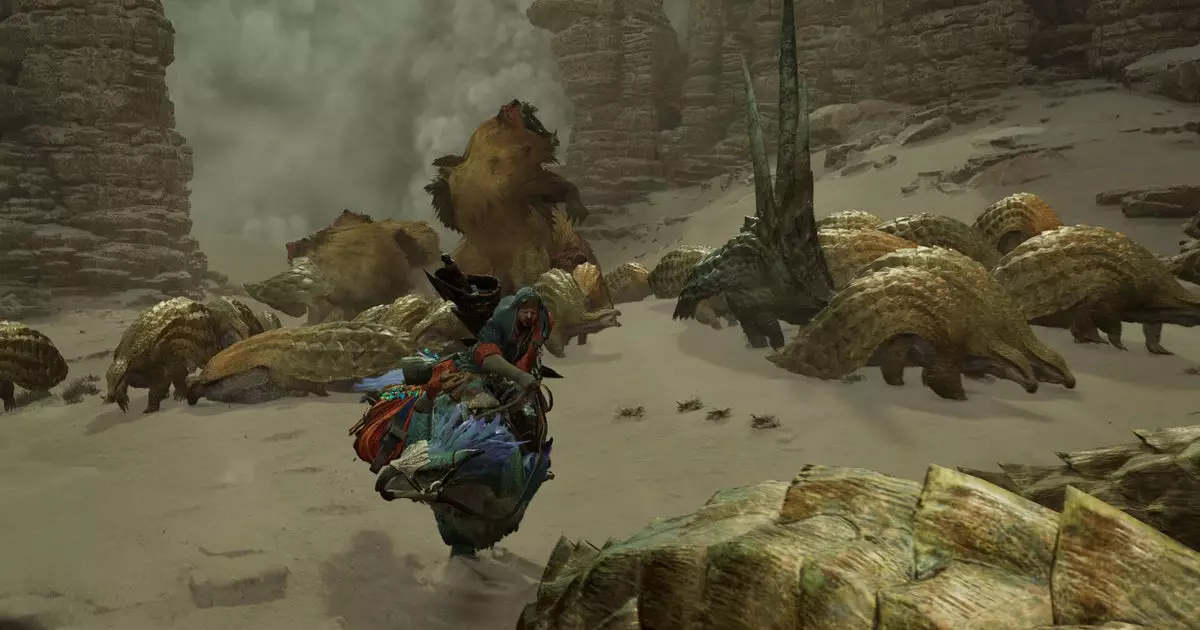The anticipation surrounding Monster Hunter Wilds has led to a wave of excitement among fans of the franchise. However, the beta version has sparked a heated discussion within the gaming community, particularly concerning the combat mechanics. A deeper exploration of the combat experience reveals critical issues related to hitstop that could define players’ impressions of this installment.
Before delving into the complexities of combat, it’s important to recognize the charm of character customization in Monster Hunter Wilds. One player, consumed by the opportunity to design their feline companion, highlighted the game’s engaging aesthetic. While this aspect may provide a temporary distraction, it underscores the broader challenge of maintaining focus on the gameplay itself.
During the initial experiences with the game, many players reported a tendency to gear more towards visuals rather than combat depth. The effort spent on perfecting one’s cat could arguably detract from an understanding of the intricate combat system. This initial distraction raises questions about the priorities set by developers and the balance between aesthetics and gameplay mechanics.
Hitstop, an essential mechanic in many action-oriented games, creates a brief pause during an attack to convey the weight and power of a weapon’s impact. It heightens the sensation of striking an enemy and reinforces the player’s connection to their actions. In previous installments of Monster Hunter, this mechanic showcased an elaborate design, allowing players to feel the significance of their attacks. However, a key criticism emerging from the Wilds beta centers on this very aspect: the apparent reduction or complete absence of hitstop in many combat interactions.
As noted by gaming enthusiast Blue Stigma, comparing the hitstop durations across different iterations of Monster Hunter reveals a significant shift. The previous titles had a well-established rhythm in combat with clearly defined hitstop intervals, reinforcing the feedback loop between player action and enemy response. Wilds, however, introduces an unfamiliar and less satisfying experience. This disruption is particularly notable, as players report that certain weapons feel less impactful due to the reduced response time.
To further elucidate the complexities behind hitstop, let’s analyze two previous entries: Monster Hunter Rise and Monster Hunter World. In Rise, the timing allows for a comfortable quarter-second hitstop, while World maintains a similar essence with a fifth-of-a-second pause. The Wilds beta, contrastingly, has stripped many weapons of this crucial feedback; the right weapon’s attack feels diminished and unfulfilling.
Players engaging with Wilds have reported feelings of confusion and dissatisfaction, leading to a sense of detachment from the gameplay. Such reactions highlight a potential misstep by Capcom in prioritizing visual elements over the core mechanics that define the franchise’s combat system.
A clear indication of player frustration can be drawn from social media reactions. Clips shared by users, showcasing the discrepancies in combat feedback, have circulated widely, igniting discussions about the perceived inadequacies of the combat system. This grassroots response serves as an important touchpoint for developers, revealing a disconnect between anticipated gameplay experience and the delivered product.
Additionally, player feedback on such fundamental mechanics often dictates the trajectory of game patches and updates. By closely monitoring the community’s responses, developers can align their adjustments with player sentiments, potentially salvaging the gameplay experience before its official release.
As Monster Hunter Wilds moves closer to its launch, the discourse surrounding its combat mechanics, particularly hitstop, becomes increasingly critical. While players embrace the series’ character customization and visual creativity, the essence of Monster Hunter lies in its satisfying combat. If Capcom is to succeed, acknowledging and addressing these gaming mechanics is paramount. The gaming community values the intricate dance between attack and response, and the ultimate success of Wilds will hinge on its ability to restore that connection.


Leave a Reply